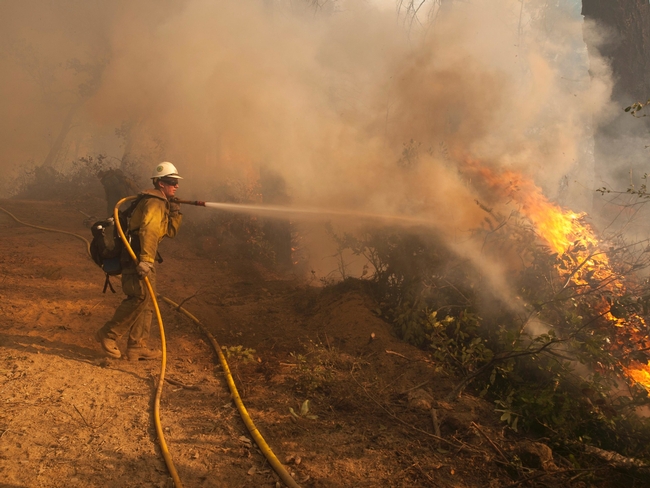All vegetation can burn, but some plant species may pose less risk than others in a wildfire-prone community, reported Noah Bemer in the Calaveras Enterprise.
In the first five feet around buildings, stone walls, rocks, patios and gravel mulch can enhance fire safety. In areas that are landscaped, high-moisture plants that grow low to the ground and contain little sap or resin also decrease fire risk.
Susan Kocher, UC Cooperative Extension natural resources advisor in the Central Sierra, said home fire safety “usually means taking away vegetation, rather than adding it. A more safe landscape would be more sparse.”
Bev Vierra-Pennington, the coordinator of the Demonstration Garden at the Government Center in San Andreas for the UC Master Gardener program of Calaveras County, said plant maintenance and spacing are much more important than the types of plants cultivated when it comes to fire safety.
“Having a list of plants (that are fire-resistant) is very misleading,” Vierra-Pennington said. “The secret is to plant plants that won't touch each other at a mature size and are nonwoody.”
Maintaining the plants is equally important. They must be watered regularly and well-trimmed. “It takes work. You can't plant it and walk away,” she said.
While cultivating fire-resistant plants instead of more combustible plant species will help to mitigate against wildfire risk, “Don't think that's going to solve the problem,” Kocher said. “No plant is really great (when it comes to protecting the home against wildfire), although some are worse than others.”
